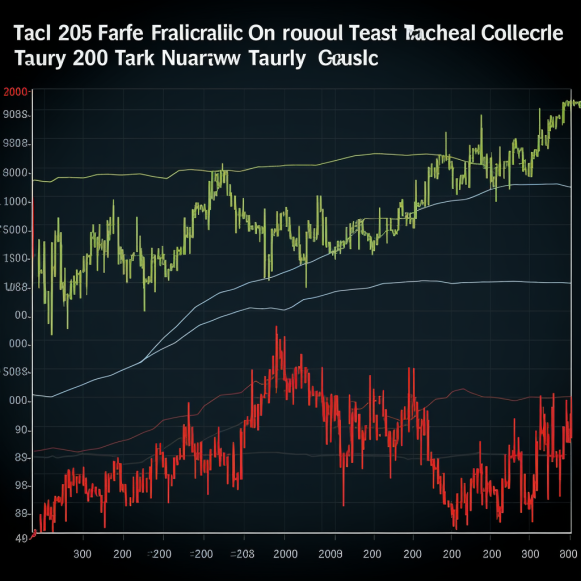A 31-year market vet shares 2 signals that show a recession is still on the way — and warns the S&P 500 still has 48% downside as valuations remain near the richest levels in history

- Jon Wolfenbarger says both the ISM PMI and GDI show a recession is coming.
- This is despite the soft-landing narrative that has emerged lately.
- Wolfenbarger is warning the S&P 500 will fall another 48% by the end of the market cycle.
Jon Wolfenbarger believes the current soft-landing narrative among economists and investors is nonsense.
Markets have become more confident that the US economy will avoid a recession, despite inflation remaining well below its peak and unemployment remaining at a historically low 3.5%. But, according to Wolfenbarger, a former JPMorgan and Merrill Lynch banker and the founder of Bull And Bear Profits, the signs of a recession are clear.
Wolfenbarger recently shared two pieces of evidence that a downturn is likely. The Institute of Supply Management’s Purchasing Managers’ Index, for example, continues to show signs of slowing economic growth. Manufacturing activity is considered to be contracting when the index falls below 50. Although the services sector contributes more to the US economy, the manufacturing index has been below 48 for eight months now, a period that is approaching that of previous recessions.
The second is that real GDP, another measure of economic growth like GDP, is now negative year over year for the third quarter in a row. Wages, corporate profits, and tax revenue are all included in GDI.
“Real GDI has never fallen three quarters in a row without the economy being in a recession,” Wolfenbarger stated. This can occur even if GDP growth is positive over the same period, and GDP can turn negative later than GDI. The US economy has grown for three quarters in a row.
Here are just corporate profits that are declining, an occurrence that usually precedes a recessionary period.
Naturally, this is bad news for stocks, which are influenced by earnings performance. However, Wolfenbarger points to a larger problem for stocks: high valuations.
Valuations are at historic highs according to measures such as the Shiller cyclically adjusted price-to-earnings ratio and market cap-to-GDP (also known as the Warren Buffett indicator). While neither measure has reached all-time highs, it is close to levels seen during the 1929, 2000, and 2008 bubbles, and it is above long-term averages.
The Shiller CAPE is as follows:
In terms of market capitalization to GDP:
Stocks have fallen by a median of 51% during bear markets where recessions occur and valuations are above historical norms to begin, according to Wolfenbarger.
This partially informs his forecast for the S&P 500 to fall to around 2,250, representing a 48% drop from current levels. Another reason for his pessimistic outlook is that stocks would have to fall that far in order to return to levels where investors could expect 5% annual returns based on historical valuation norms.
Wolfenbarger’s points of view in context
Aside from the two indicators mentioned by Wolfenbarger, there are numerous other economic indicators that indicate a downturn is on the way.
The Treasury yield curve is one of the most widely followed. Shorter-term yields, such as the 3-month, are currently higher than longer-term yields, such as the 10-year. Over the last several decades, inversions like this have a perfect track record of preceding recessions, and they occur in large part due to more severe Fed tightening cycles, which frequently end in downturns.
The Conference Board’s Leading Economic Index, a composite measure of things like manufacturing activity, housing market activity, stock performance, and consumer expectations, is another indicator. It also has a perfect hit rate in predicting the onset of a recession and is currently in downturn territory.
A third option is to tighten lending standards. When banks are concerned about the ability of consumers and businesses to repay loans, they tighten lending standards. As a result, spending and business expansion slow, undermining economic growth.
However, the economy is holding up for the time being. However, the longer the Fed keeps interest rates high, the greater the strain on the economy.
In terms of valuations, some measures paint a kinder picture than those emphasized by Wolfenbarger. Even so, they are above long-term averages. The S&P 500, for example, has a trailing 12-month price-to-earnings ratio of 25, which is higher than the long-term average of 19, but lower than the dot-com bubble level of 45.
Wolfenbarger’s 48% sell-off prediction is well outside the mainstream of where strategists see stocks going. Even the most pessimistic strategists at major Wall Street banks see the S&P 500 falling to the mid-to-low 3,000s.
However, drops of 40% or more have occurred twice since the turn of the century. With valuations so high, a significant recession, as Wolfenbarger warns, could triple that.






